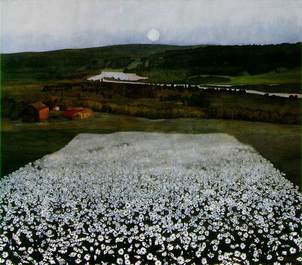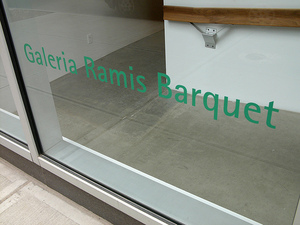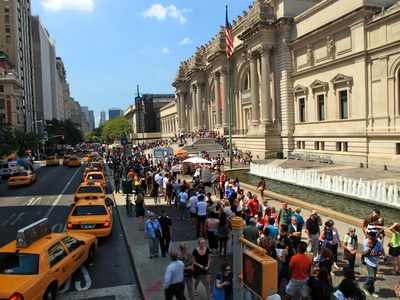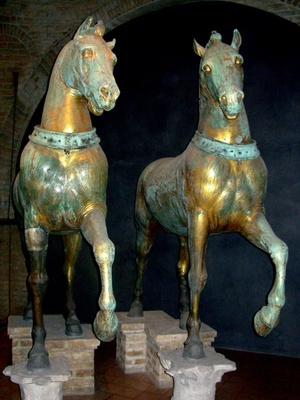In a positive profile of Michael Govan, director of the Los Angeles Country Museum of Art, last May, Jori Finkel of the Los Angeles Times quoted him as saying something I quite approved of at the time. Describing Chris Burden’s Urban Light, an installation at the museum of more than 200 salvaged Art Deco lampposts, Govan said it was a popular meeting place, a venue for wedding photos and film shoots, and a symbol for LACMA. “The logo for the museum is an artwork, not a building,” he said.
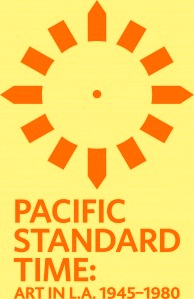 In recent years, many museums have somehow become too associated with their buildings — it’s their identifying symbol, which sends the wrong message to visitors, I think. It says, see the building, not necessarily the art, and besides, once you’ve seen the building, you’ve seen what you’ve come for.
In recent years, many museums have somehow become too associated with their buildings — it’s their identifying symbol, which sends the wrong message to visitors, I think. It says, see the building, not necessarily the art, and besides, once you’ve seen the building, you’ve seen what you’ve come for.
I thought of Govan’s quote today when I received a press release for a part of Pacific Standard Time, the multi-exhibition art extravaganza that’s taking place in Southern California this fall. Started by the Getty, it now involves more than 60 cultural institutions that have organized shows and events to “celebrate the birth of the L.A. art scene.”
Every fall, it seems, a museum opens a new wing or new building that makes it the art event of the season; single exhibitions usually can’t compete, even if they travel.
But Pacific Standard Time has the potential to make this art season really about art, instead of architecture. Take a look at the exhibitions. Because it’s so large, covering so much ground, it might just qualify as the season’s event. As the Getty says on its website:
Los Angeles is the birthplace of many of the most influential art movements of the second half of the 20th century, yet much of this history is not well known. …From October of 2011 through March 2012, exhibitions and programs [in Pacific Standard Time] across the region will highlight the artistic production of Southern California, ranging from hard-edge painting to assemblage sculpture, from the Light and Space movement to film and video art, from Pop Art to feminist art, and from performance art to modern design.
The Getty Foundation started this in 2002, when it gave out grants to preserve archives from the period, and acquired many of them. They realized what they had, and its potential, and soon they invited other institutions in and some institutions clamored to get in. Officially, the festivities begin in October and run for six months, but some shows are starting sooner.
In particular, the role of Pomona College is being explored in shows that begin Aug. 30, when It Happened at Pomona kicks off with Hal Glicksman at Pomona.
Literally and figuratively, this initiative covers a lot of ground, and will take a lot of time to see and digest. It may even be so big that it swamps the museum openings set for this fall. That would be great, wouldn’t it?

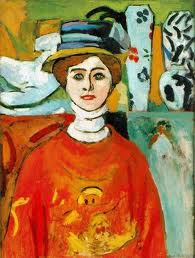 The Steins Collect
The Steins Collect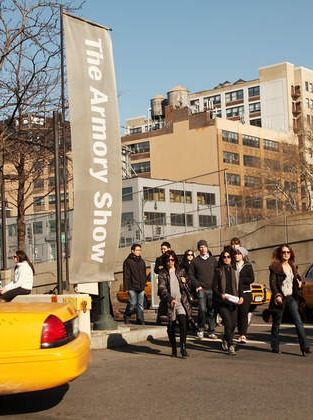 Armory Focus, which takes place during The Armory Show, held annually in March in New York, is supposed to recognize “an under-recognized yet thriving arts community.” Katelijne De Backer, Executive Director of The Armory Show, noted, “The extensive and overwhelming network of artists, curators, collectors, museums, and galleries in these countries attests to the Nordic region’s international importance.”
Armory Focus, which takes place during The Armory Show, held annually in March in New York, is supposed to recognize “an under-recognized yet thriving arts community.” Katelijne De Backer, Executive Director of The Armory Show, noted, “The extensive and overwhelming network of artists, curators, collectors, museums, and galleries in these countries attests to the Nordic region’s international importance.”